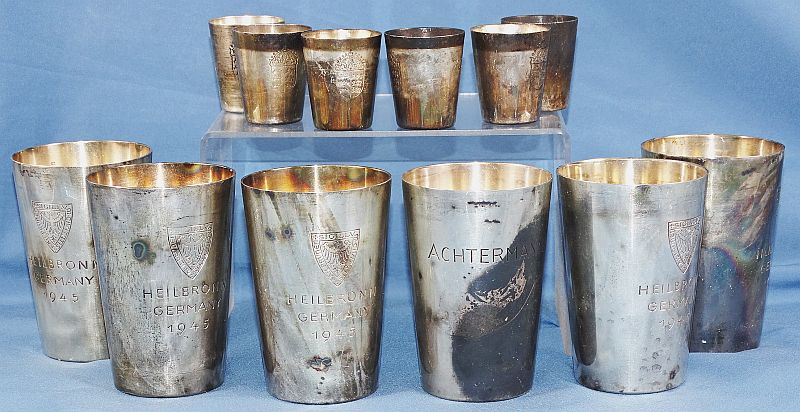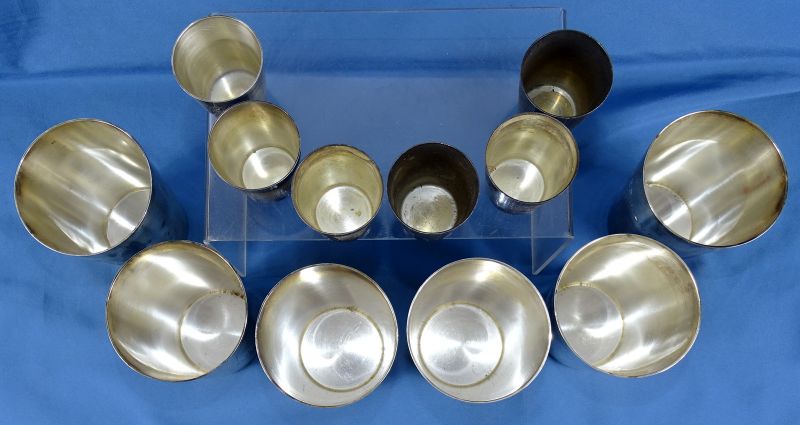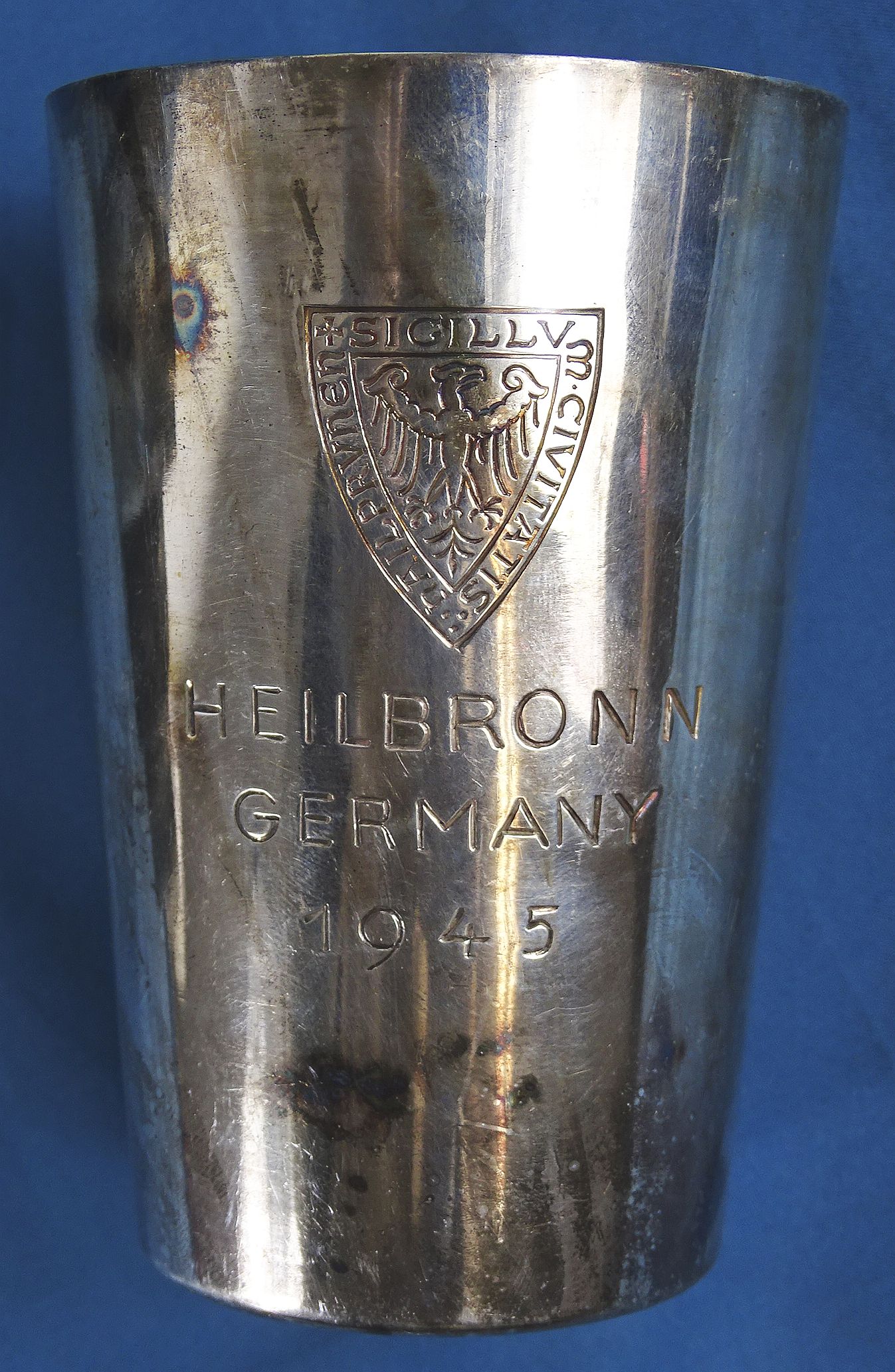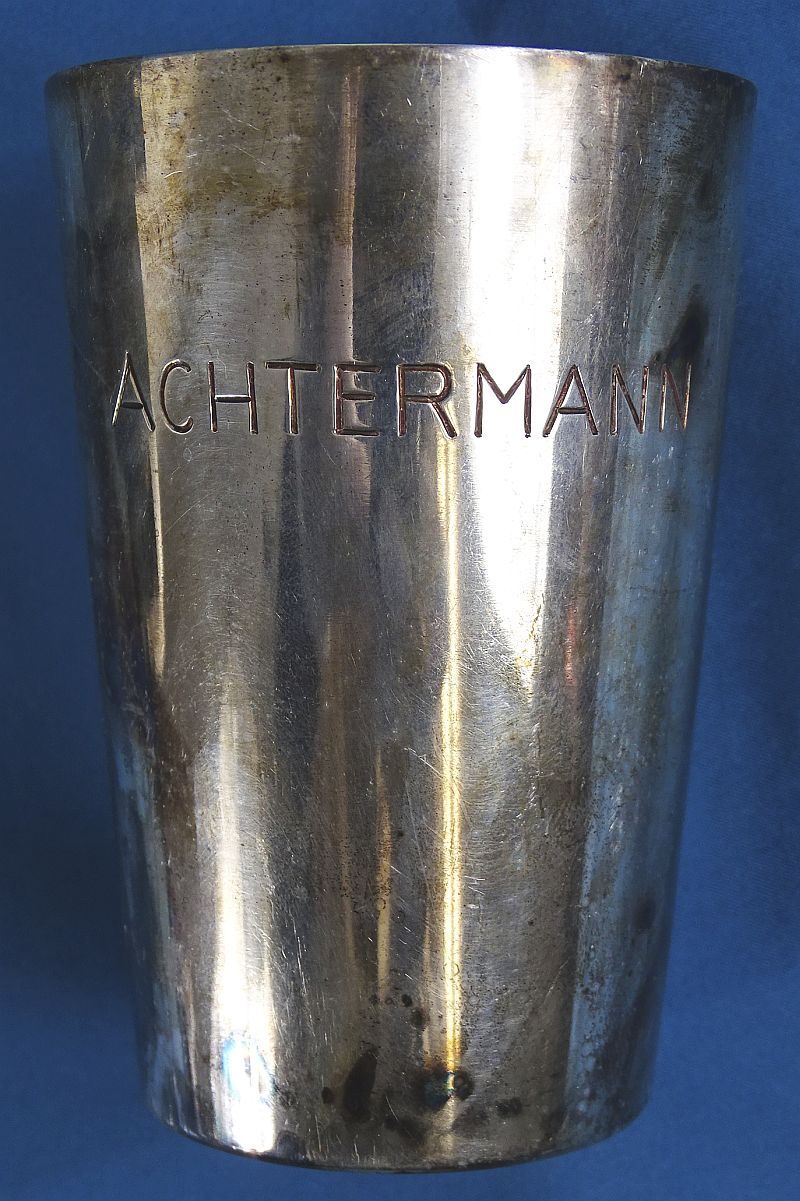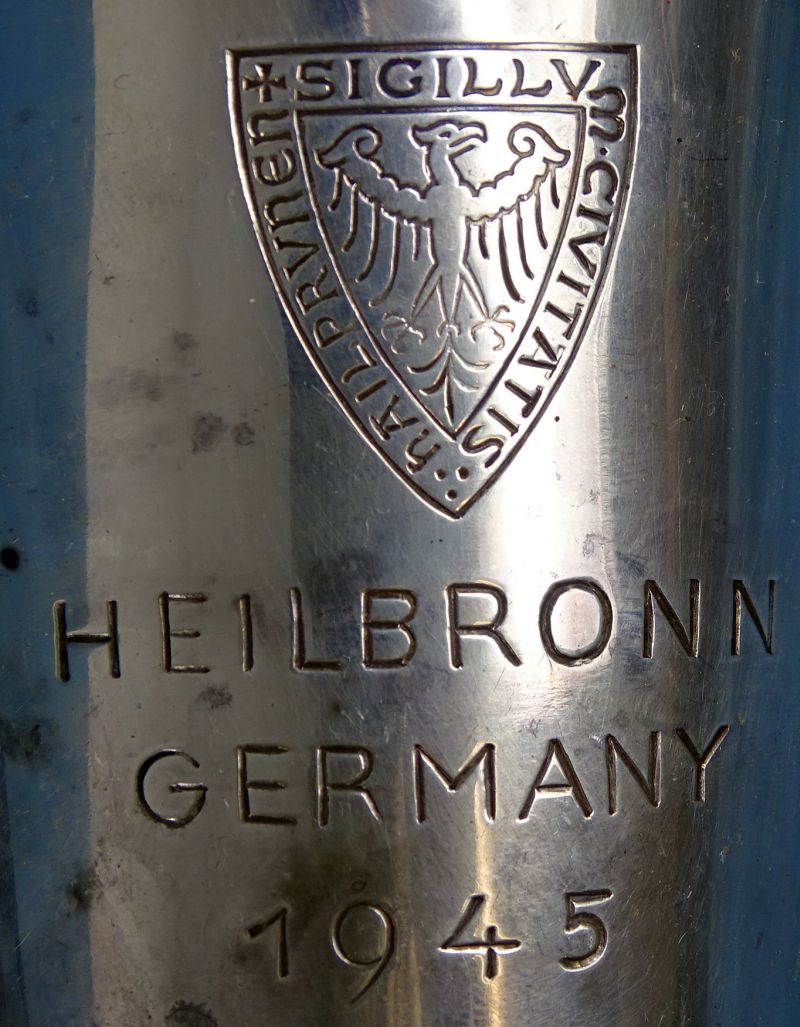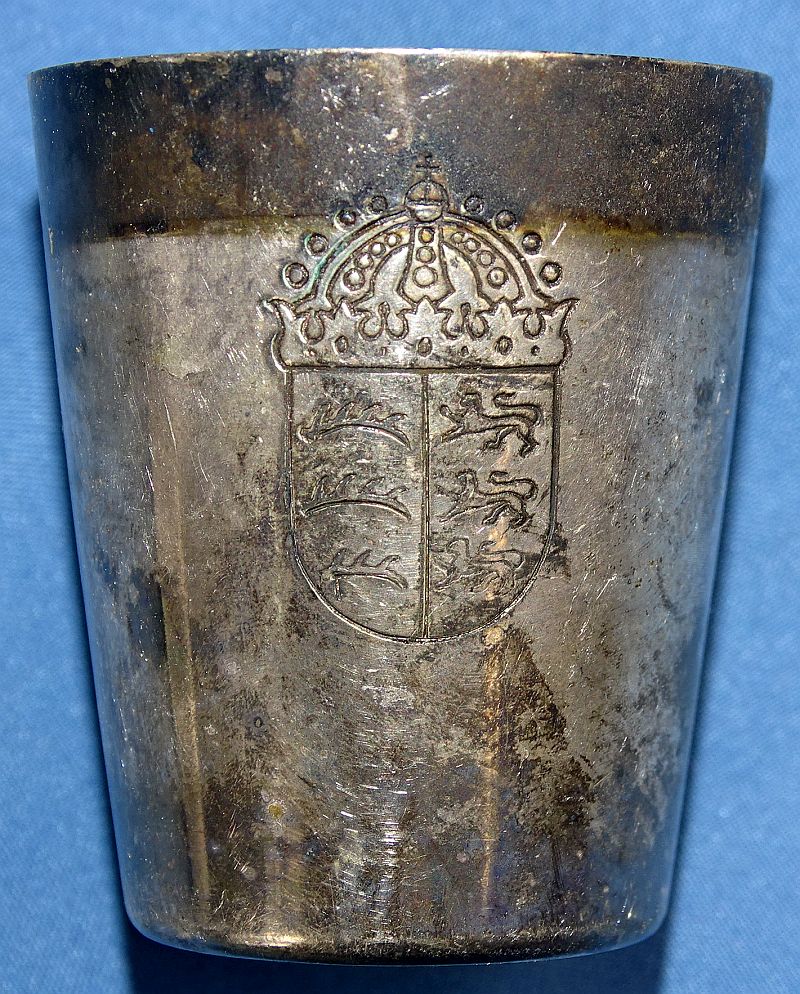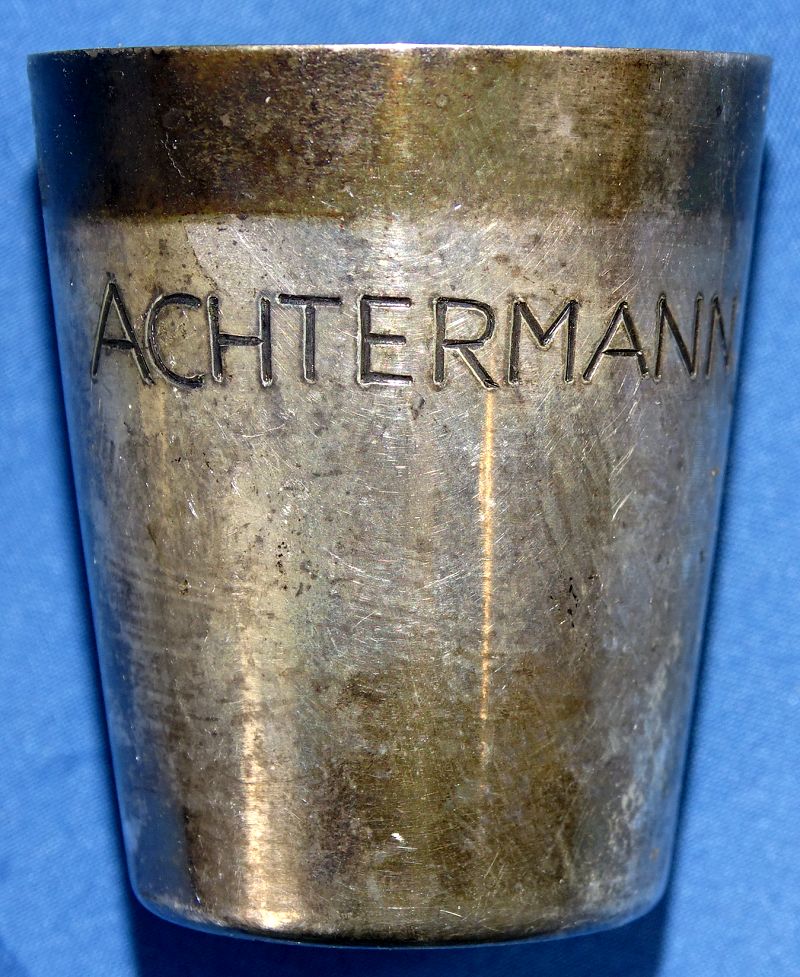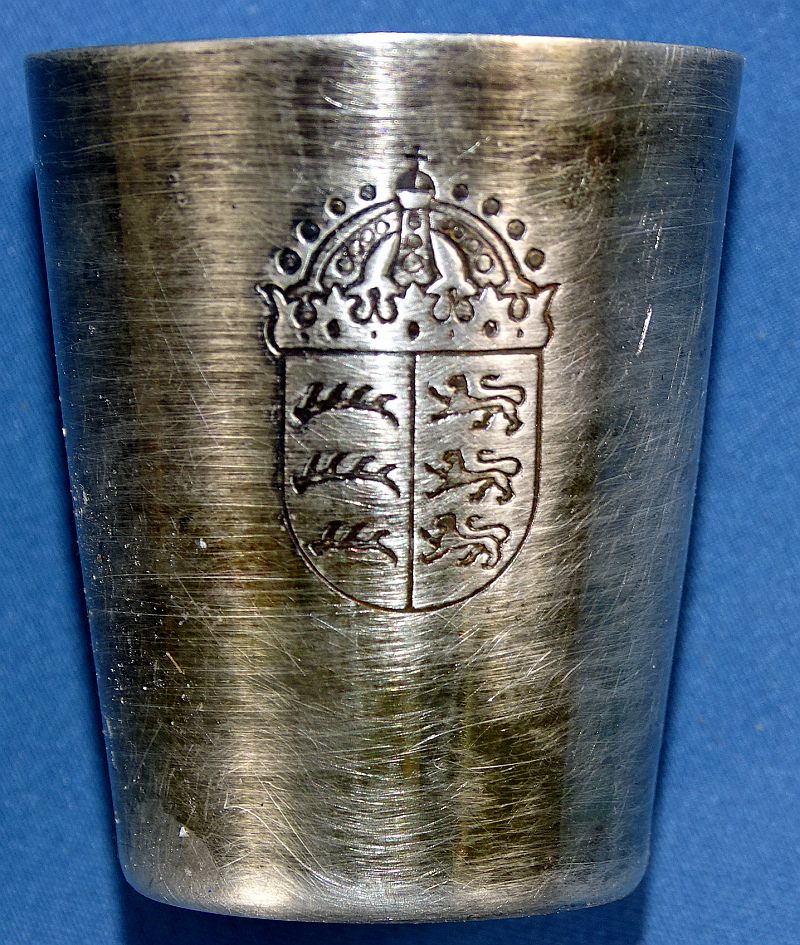Twelve Named and Engraved 1945 Dated World War II ETO German Souvenir Cups
$350.00
The group is comprised of six larger cups and six smaller cups, and all are engraved. None of the cups bear any maker mark or designation of metal content, but many of the the cups show a dark patina and the finish appears to be more than silverplate, since there are no spots of wear which reveal an underlying metal. The larger cups are approximately 3 1/2 inches tall, with a base diameter of 1 3/4 inches. One side of each cup bears the engraved crest of the city of Heilbronn, Germany. Below this each cup is engraved “Heilbronn Germany 1945”. The opposite side of each cup bears the engraved name of “Achtermann”. The smaller cups are each approximately 1 3/4 inches tall with a base diameter of approximately 7/8 of an inch. Each of the small cups bears an engraved crest (which is different from the city crest of Heilbronn that is on the large cups) and, as with the large cups, each of the small cups bears the engraved name of “Achtermann”. A review of the entries of the internet database of World War II U.S. Army enlistment records disclosed only two men named “Achtermann”, one of whom enlisted in October of 1945 and so was likely not the owner of the cups. The other individual was “William C. Achtermann”, service number 15140247, who enlisted in 1942. He was from Ohio, and his obituary was located on line. It stated that “Bill was a graduate of Scott High School in 1942. He served in the United States Army during World War II in Germany and the Philippine Islands”. As such, he was very probably the soldier who brought these cups home as a souvenir. The city of Heilbronn was captured by the U.S. Army in 1945 and became a base for U.S. Army troops in the years after the war. The following information about the city is found in Wikipedia:
“On November 10, 1938, the Heilbronn synagogue was destroyed during the Kristallnacht. Soon thereafter the Jewish community was all but eliminated.
Starting in 1942 during World War II, the salt mines in and around Heilbronn were used to store art and artifacts from Germany, France, and Italy. Similarly, important producers of the war industry were moved into the mine shafts. The expansion of the shafts was undertaken by labour brigades of the concentration camp branches in Kochendorf and Neckargartach. From Heilbronn all the way to Neckarelz numerous subterraneous complexes, some of them gigantic, were constructed; on November 20, 1942, the Heilbronn Bureau of Labour had 8,000 forced labourers registered in its district.
In 1940 allied air raids began, and the city and its surrounding area were hit about 20 times with minor damage. On September 10, 1944, a raid by the allies targeted the city specifically, in particular the Böckingen train transfer station. As a result of 1,168 bombs dropped that day, 281 residents died. The city was carpet-bombed from the southern quarter all the way to the Kilianskirche in the center of town. The church was burnt out.
After a ten-day battle, with the allies advancing over the strategically important Neckar crossings, the war ended for the destroyed city, and it was occupied by the U.S. Army on April 12, 1945. Local NSDAP leader Drauz became a fugitive because of executions of American prisoners of war he had ordered in March 1945. He was eventually arrested, tried, and hanged by the Allies in Landsberg on December 4, 1946.”

